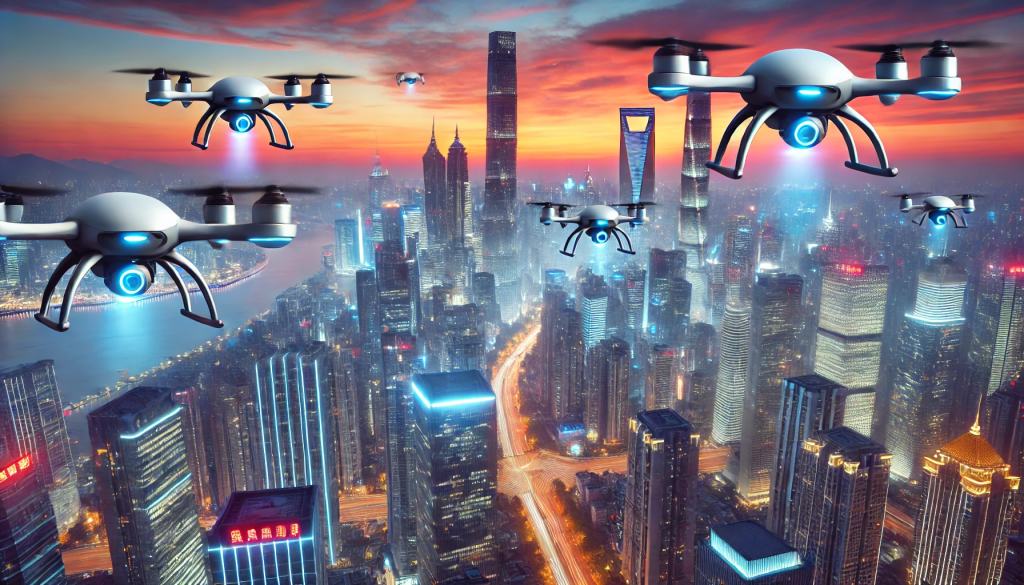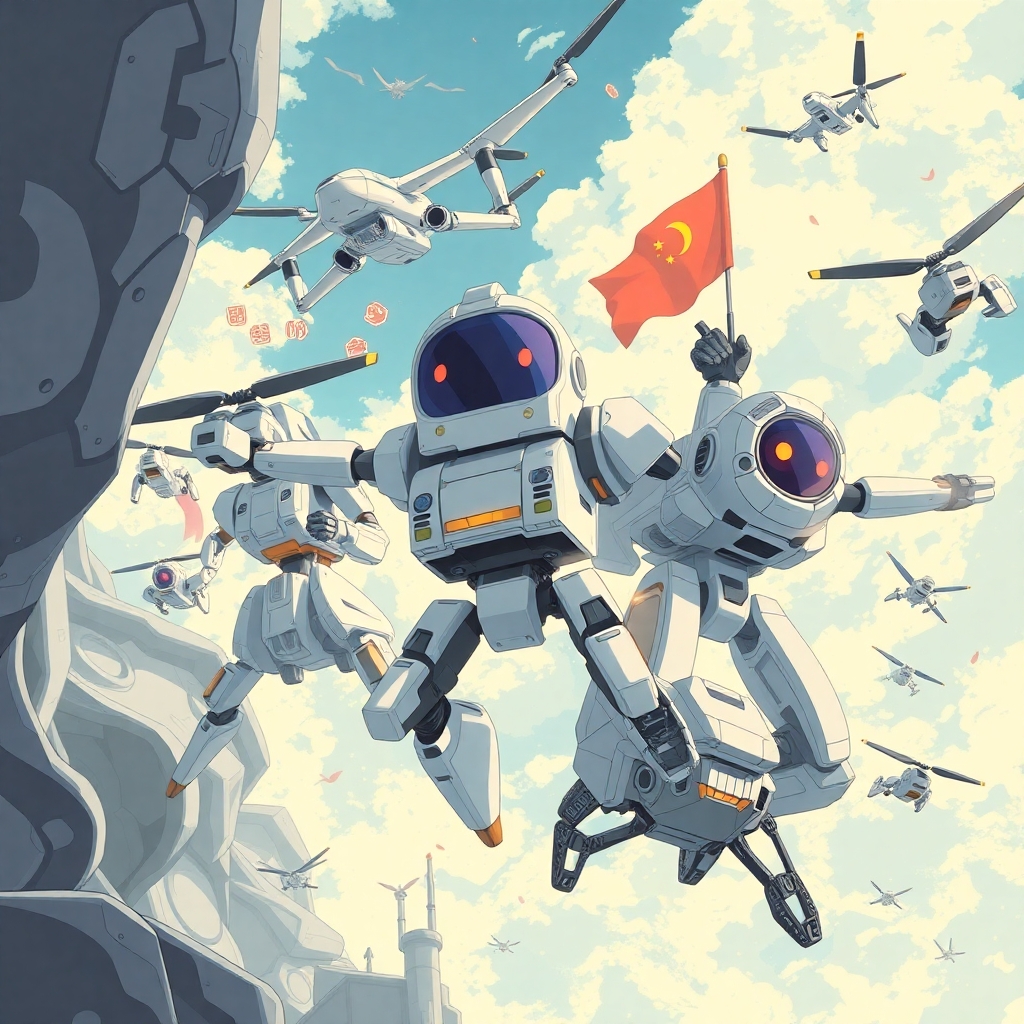In the heart of China’s technological revolution, a new era of innovation is unfolding, driven by the rapid advancement of artificial intelligence. From autonomous drones patrolling the skies to agile robots transforming factory floors, China is not just embracing the future—it’s actively challenging Western technological dominance. As this AI superpower emerges, the global balance of technological power is shifting eastward, creating both opportunities and tensions on the world stage.
The Rise of AI in China
China’s determination to become the world’s AI leader is backed by enormous investments from both government and private sectors. The “Next Generation Artificial Intelligence Development Plan” unveiled in 2017 set an ambitious goal: to make China the global AI hub by 2030, directly challenging America’s long-standing technological supremacy.

This strategic vision has fueled an explosion of AI startups, research institutions, and industrial applications. While Western tech giants like Google and Microsoft have historically led AI development, Chinese counterparts—Baidu, Alibaba, and Tencent (BAT)—are rapidly closing the gap, sometimes surpassing their Western rivals in practical applications. The most striking advancements are occurring in drones and robotics, areas where China has transformed from a follower to a leader.
Autonomous Drones: Challenging Western Skies
China’s drone industry exemplifies its technological ascendancy. DJI, now controlling over 70% of the global consumer drone market, has outmaneuvered Western competitors through superior technology and aggressive pricing. These AI-powered flying machines are revolutionizing industries previously dominated by Western innovation.
In agriculture, Chinese drones analyze crop health and optimize resource use more efficiently than many Western alternatives. In logistics, companies like JD.com are deploying drone delivery systems that rival Amazon’s still-experimental programs. The sophistication of Chinese drone AI allows for navigation in complex environments and real-time decision-making that matches or exceeds Western capabilities.

The military applications are particularly concerning to Western nations. Chinese surveillance drones equipped with advanced facial recognition technology patrol borders and monitor urban areas with unprecedented efficiency. These developments have sparked urgent debates in Washington and European capitals about the security implications of China’s drone supremacy.
Robotics: Automating Faster Than the West
China’s robotic revolution presents another front in the technological competition. Once dependent on Western robotic technology, China now leads in deployment and increasingly in innovation. Chinese factories are becoming smarter and less reliant on human labor at a pace that outstrips many Western economies.
Companies like UBTECH Robotics and CloudMinds are developing humanoid robots that challenge Western counterparts in capability and cost-effectiveness. In healthcare, Chinese robots assist in surgeries and elderly care, addressing demographic challenges earlier and more comprehensively than many Western nations facing similar aging populations.
This accelerated automation is reshaping global manufacturing. China’s ability to rapidly deploy robotic solutions allows it to maintain competitive advantages even as labor costs rise, directly challenging Western assumptions about the inevitable reshoring of manufacturing.

The AI Darling: East vs. West
Among China’s emerging AI innovators, one company stands poised to become the next global AI powerhouse. This entity represents the convergence of AI, robotics, and autonomous technology in a way that directly challenges Western technology leaders.
Unlike some Western AI companies that prioritize theoretical research, this Chinese contender focuses on creating seamless AI solutions that integrate hardware and software for immediate practical applications. Their approach combines cutting-edge innovation with pragmatic implementation, allowing for faster market penetration than many Western competitors.
While Western critics raise concerns about data privacy and ethical standards, this company is actively shaping new ethical frameworks for AI development that reflect Chinese values and priorities. This represents not just a technological challenge but a philosophical one, as different approaches to AI ethics and governance emerge from East and West.
Confrontation and Competition
The rise of Chinese AI capabilities has transformed technological development into a new form of geopolitical competition. Western nations, particularly the United States, have responded with increasing restrictions on technology transfer, investment screening, and export controls targeting Chinese AI firms.

These measures reflect growing concerns about national security implications and the potential dual-use nature of technologies like drones and facial recognition systems. Chinese companies, meanwhile, have adjusted by developing indigenous alternatives to Western technologies, accelerating rather than slowing the technological divergence.
The competition extends beyond individual technologies to global standard-setting. China’s proactive approach to AI governance and standardization through initiatives like the Belt and Road Digital Silk Road challenges Western-dominated institutions and norms. Countries increasingly find themselves choosing between Chinese and Western technological ecosystems, with significant implications for future development and alliances.
A Divided Technological Future?
China’s remarkable advances in AI, drones, and robotics signal a fundamental shift in the global technological landscape. The question is no longer whether China can compete with Western innovation but how Western nations will respond to China’s technological ascendancy.
As Chinese drones fill global skies and robots transform factories worldwide, the technological confrontation between East and West is reshaping international relations. The emergence of China’s next AI darling will not only represent technological achievement but also symbolize a new era where technological leadership is contested rather than assumed.
This new reality demands both competition and cooperation. While security concerns drive technological decoupling in sensitive areas, global challenges like climate change and healthcare require collaborative AI solutions. The future may not belong exclusively to either Eastern or Western technological paradigms, but to those who can navigate this complex landscape of competition and selective collaboration.

In the algorithms that increasingly shape our world, China’s AI revolution is writing a new chapter in global technological history—one that challenges long-standing assumptions about Western technological superiority and points toward a more multipolar digital future.
Copyright©dhaka.ai
tags: Artificial Intelligence, Ai, Dhaka Ai, China, Darling



